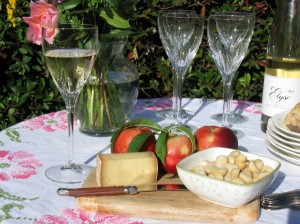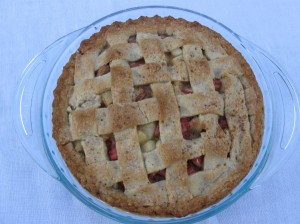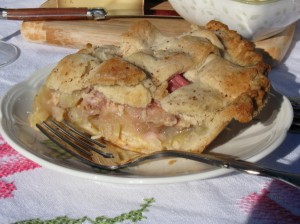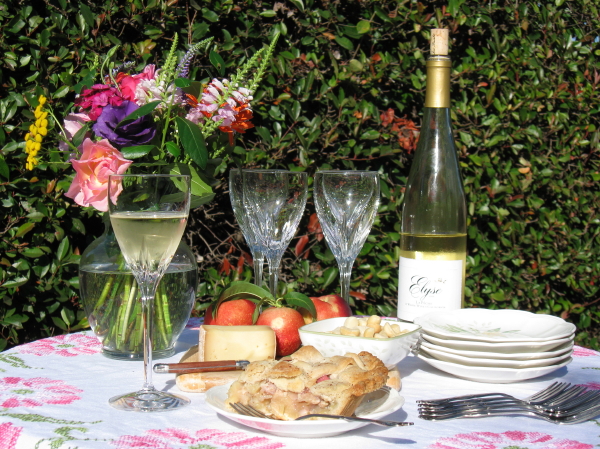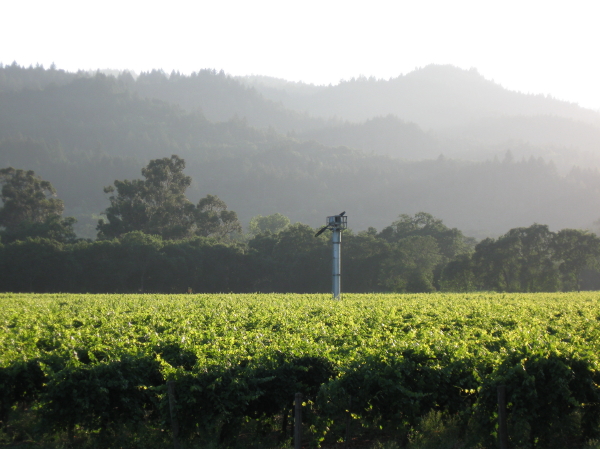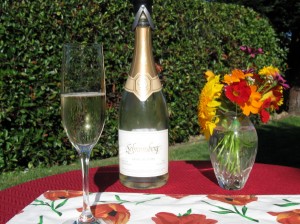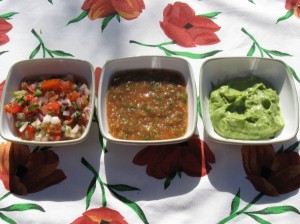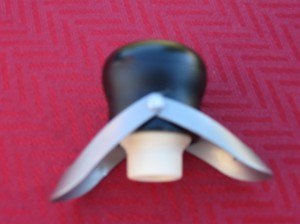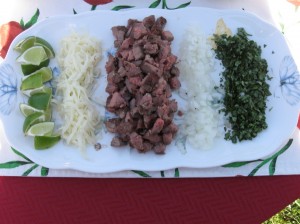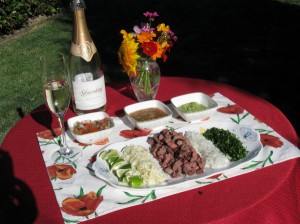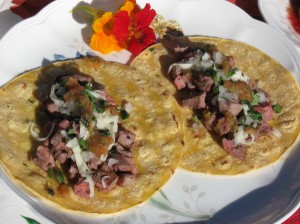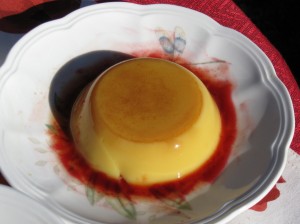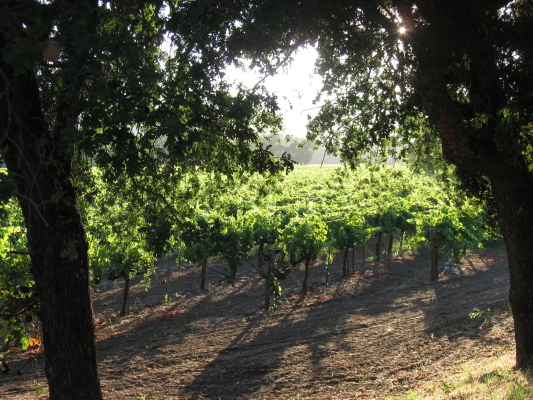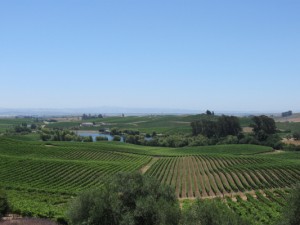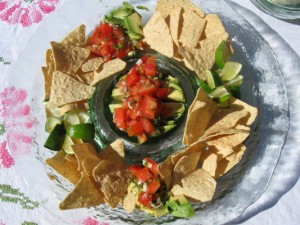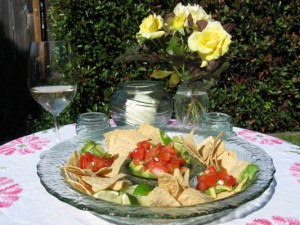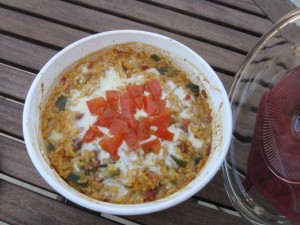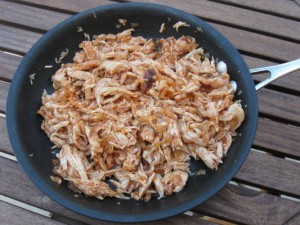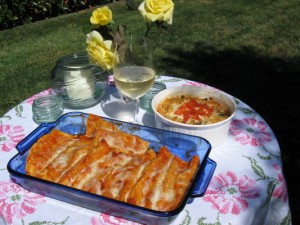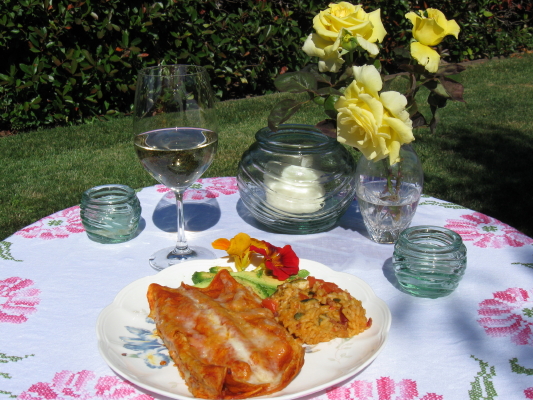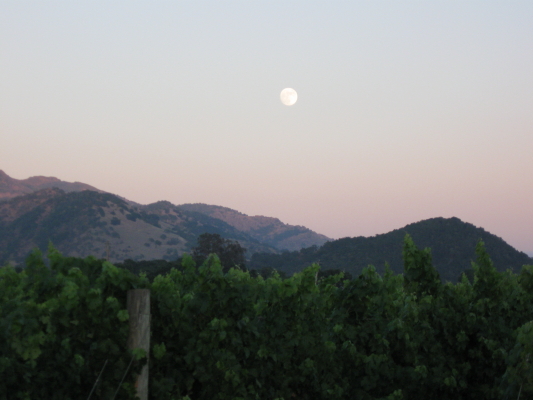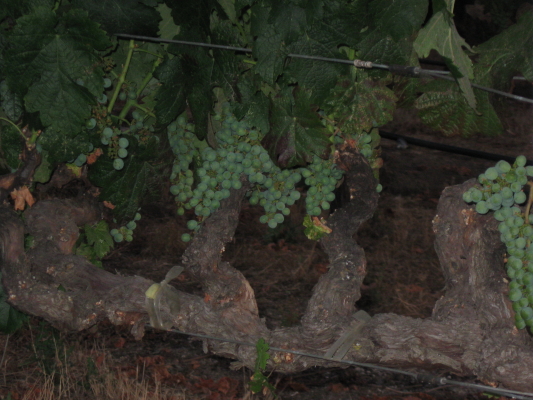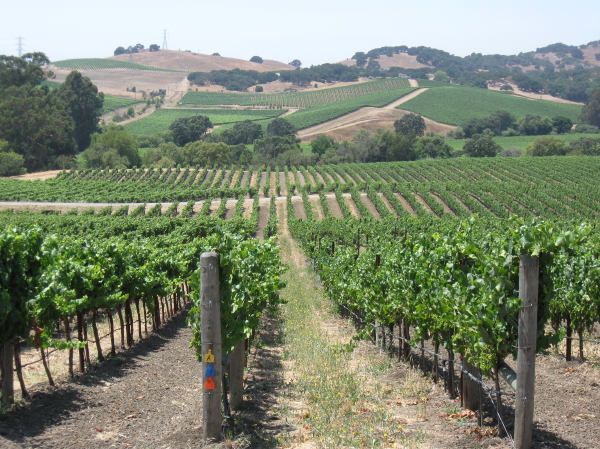
Driving through the Carneros Region of Napa County easily triggers feelings of romance. Despite the sun’s warmth on your skin, you are cooled by gentle maritime breezes, the air is tinted with aromas of ripening grapes and for as far as your eye can see, you are surrounded by rolling hills populated by endless vineyards. Every so often, tucked in among these rolling grapevine-loaded hills, you come upon a creek and as you near, the air has a refreshing sense of moisture. Perhaps due to this undeniable sense of environmental harmony, Pinot Noir grapes are grown in this region of California.
Pinot Noir is a difficult, temperamental and fragile grape to grow. Historically it has found the most consistent and successful growing environment in Burgundy, France, in a two mile wide, thirty miles long stretch of vine-laden hills. This region in Burgundy receives sunshine from the East, providing long hours of sun while not heating up dramatically in the late afternoon. In order to have a memorable aromatic bouquet, the grapes do require heat to grow but a significant cooling down in order to avoid disastrous late afternoon sun effects. If the vineyard has a balance of loamy and well-drained soil, the Pinot Noir wine itself will show a delicate complexity and varied layers of rich flavors.
Pinot Noir ebbs its way across the palate like lilting rose petals, triggering sensations of silk and velvet. Each complex layer of flavor in a good Pinot Noir glides and richly spreads throughout the mouth, as if delivered by the gentle brush stroke of a skilled watercolor painter. Kissed by dark cherry and further encouraged by anise, the wine lingers as if waxing poetically and eventually softly floats away in its finish. It is a wine that is not rushed, but is slow and thoughtful in its seduction.
Given its smooth unassuming mouth feel, Pinot Noir is deceptive as a red wine given that tannins are absent and there is no cautionary heat felt with the wine which would be indicative of its high alcohol content. If not careful, a newly enamored connoisseur can become mildly bewildered and flushed when Pinot Noir’s alcohol content sneaks up on him or her.
Traditionally in the United States, Willamette Valley in Oregon offers the most promise for growing great Pinot Noir grapes. I have tasted a few great ones from Oregon and my tasting was done long before the movie “Sideways” made drinking Pinot Noir “vogue”. But based on the description of Burgundy, France and the elements found in the Carneros Region (which located in both Napa and Sonoma Counties), it is only presumable that some good Pinot Noir wine also would be found here in Napa Valley.
After tasting several Pinot Noir wines in both Napa and Sonoma County this year, I have narrowed my favorites to include two:
(a) Hendry Ranch Wines’ (“Hendry”) 2006 Pinot Noir; and
(b) Laird Family Estate Winery’s (“Laird”) 2007 Ghost Ranch Pinot Noir.
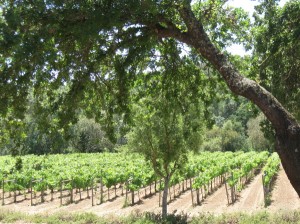
As mentioned in last week’s article about Albarino, Hendry abuts Mt. Veeder in Napa Valley. However, due to its location, Hendry is also not far from the Carneros Region and is just close enough to receive the bay or coastal breezes which help cool down some of the grapes growing at its vineyard. Hendry also has the benefit of Redwood Creek being on its property, which provides additional moisturizing benefits. Seeking to maximize these benefits, Hendry’s Pinot Noir grapevines are purposefully planted in lots adjacent to the creek. In the glass, the wine has a rich bejeweled garnet color and the fading rays of sunlight sparkle and dance off the wine as it swirls in my glass. On the nose, Hendry’s Pinot Noir presents aromas of blackberry, dark cherry, anise and an unexpected dash of white pepper. Similarly, these scents convert into subtle layers of flavors adding in a hint of cranberry, but as you continue to taste, the wine brings forth a subtle smell of rose petals. While it is seemingly light on the palate, it still conveys a certain romantic rich flavor and a sense of casual elegance.
While Laird is located in Napa Valley, it owns significant land through Napa Valley and also some parcels in Sonoma County. Its 2007 Ghost Ranch Pinot Noir hails from the famous Carneros Region. Similar to Hendry’s Pinot Noir grapes, Laird’s are planted alongside a creek which has been fabled to be inhabited by ghosts or spirits as workers have claimed to have seen spirits of children playing among the vines. Whether this piece of trivia has any bearing on the wine is up for speculation, but the magical bouquet and flavors in this wine has been potent enough to garner ratings of 93 points from the Wine Spectator (for those of you who follow ratings). In the glass, this Pinot Noir has a delicate plum coloring and, if caught in the sunlight just right, glimmers of lavender. A good Pinot Noir is known for an enchanting perfume and Laird’s 2007 Ghost Ranch Pinot Noir readily meets this standard. On the nose, the wine awakens the senses with aromas of dark cherries, plum, anise, fresh thyme, and distinct wisps of lavender which immediately send the imagination to the countryside of Provence, France. Floating softly across the palate, the wine is as delicate as its coloring and yet vivid with layers of complexity. It has all the potential for romance and the excitement of new-found love.
As you encounter cool romantic mid-summer evenings with candlelight and dinner served on your patio, it is only fitting that Pinot Noir be included. Poetry may not be your natural forte in the realm of romance, but selecting a quality Pinot Noir will serve poetic enough for both you and the object of your affection. Pinot Noir, being delicate, aromatic and sensual, mirrors the way romance is often classically defined.
Think that creating this ambiance is too difficult to create at home?
Heavens no.
Pinot Noir is a wonderful red wine to pair with food and because of its smooth, well-structured balance it also pleases many a palate. It can go with a wide variety of meats, poultry, vegetables and even salmon. However, because Pinot Noir is characteristically delicate, any food pairing involving spices must be carefully planned. For example, if Herbes de Provence is properly made, it is similarly delicately blended. It connotes fragile layers of complexity quite similar to Pinot Noir. Putting together a simple meal involving Herbes de Provence, mushrooms, blue cheese and Pinot Noir is certain to set forth a romantic setting in any backyard, patio or dining room. My menu this week includes:
1) Sweet Red and Summer Crisp Lettuce Salad With Dried Cranberries, Crumbled Point Reyes Blue Cheese and Balsamic Vinaigrette;
2) Herbes de Provence Wild Rice With Toasted Pine Nuts, White Truffle Oil and Pinot Noir Sautéed Baby Portobello Mushrooms; and
3) Grilled Herbes de Provence Chicken With Seasonal Steamed Garden Vegetables.
Gathering Red and Summer Crisp Lettuces from my vegetable garden and putting the salad together with dried cranberries and blue cheese crumbles creates a facially simple side salad, but the flavors inherently go with Hendry’s 2006 Pinot Noir. Blue cheese pairs almost seductively with this wine, flushing out layers of complexity in their Pinot Noir. The dried cranberries also induce the same flavors forward in the wine. Laird’s 2007 Ghost Ranch Pinot Noir will also hold up well with this salad, although the salad’s flavors are more closely aligned with Hendry’s 2006 Pinot Noir.
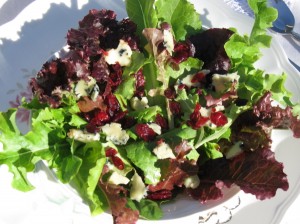
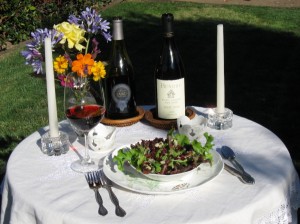
Living in Napa Valley, I feel compelled to take advantage of the herbs which grow naturally and abundantly around me. Given where I live and taking into consideration what grows in my garden, Herbes de Provence is better fresh than dried from a jar. The smells are akin to driving up valley with the car windows down and taking in the naturally found scents in the air. Gathering freshly grown herbs from my garden, I created a carefully measured and balanced blend of the herbs that are traditionally found in Herbes de Provence. Additionally, purists will argue that lavender is not found originally in Herbes de Provence and was later added after tourists to this region of France kept commenting on the lavender growing naturally and wondering why it was not included in the blend. I have decided to experiment. I have kept the traditional blend of herbs but have set aside a few lavender petals which I will use only with the grilled chicken (and not in the wild rice).
To help tie the wine into the meal, I elected to sauté my baby Portobello mushrooms in Pinot Noir. Mushrooms also inherently go well with Pinot Noir. Once the rice was prepared and tasted with Hendry’s 2006 Pinot Noir, the mushrooms seemed to accentuate the wine’s aromas of rose petals and the wine took on an even softer feel in the mouth than before. When paired with Laird’s 2007 Ghost Ranch Pinot Noir, the white truffle oil that I added to the rice seduces more complexities out of the wine as if to encourage the wine to divulge its vineyard’s mysterious heritage.

Prior to grilling the chicken, in order to preserve the poultry’s moisture, I elected to marinate it in a cup of dry white wine with some lavender petals. While heating the grill, I next marinated the chicken for a second time with the Herbes de Provence and carefully set a lavender petal or two atop each chicken breast. The result was divine succulence. Both wines went beautifully with the Herbes de Provence Grilled Chicken. Which one wins out? Whether you want to be a “purist” or a proverbial “tourist” will determine which wine you choose. If I were not using lavender petals, I would select Hendry’s 2006 Pinot Noir. Using lavender petals, Laird’s 2007 Ghost Ranch Pinot Noir is the clear choice as it naturally has a hint of lavender in its bouquet and the aromas only increase as the meal progresses, thereby lending itself to be a very sensually aromatic Pinot Noir.
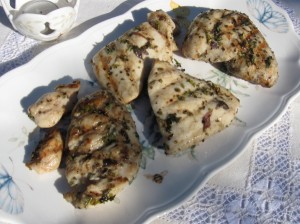
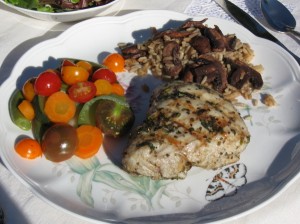
With layers of varied aromas and subtle complexities, Pinot Noir casts a romantic spell certain to bewitch your senses. So this weekend, take a moment to surprise your loved one or “date de jour” with candlelight on the patio, the aromatic perfume of fresh cut flowers from the garden, Herbes de Provence and Pinot Noir: a combination certain to momentarily transport you to a quiet world of elegance where the sole invitees are you and your beloved.


